The WhiteFox is the first A-grade mechanical keyboard I designed to be commercially available to the public.
In the last few years I worked on many iterations of the same compact layout and the WhiteFox is the result of the experience grown during a journey that actually started in 2013.
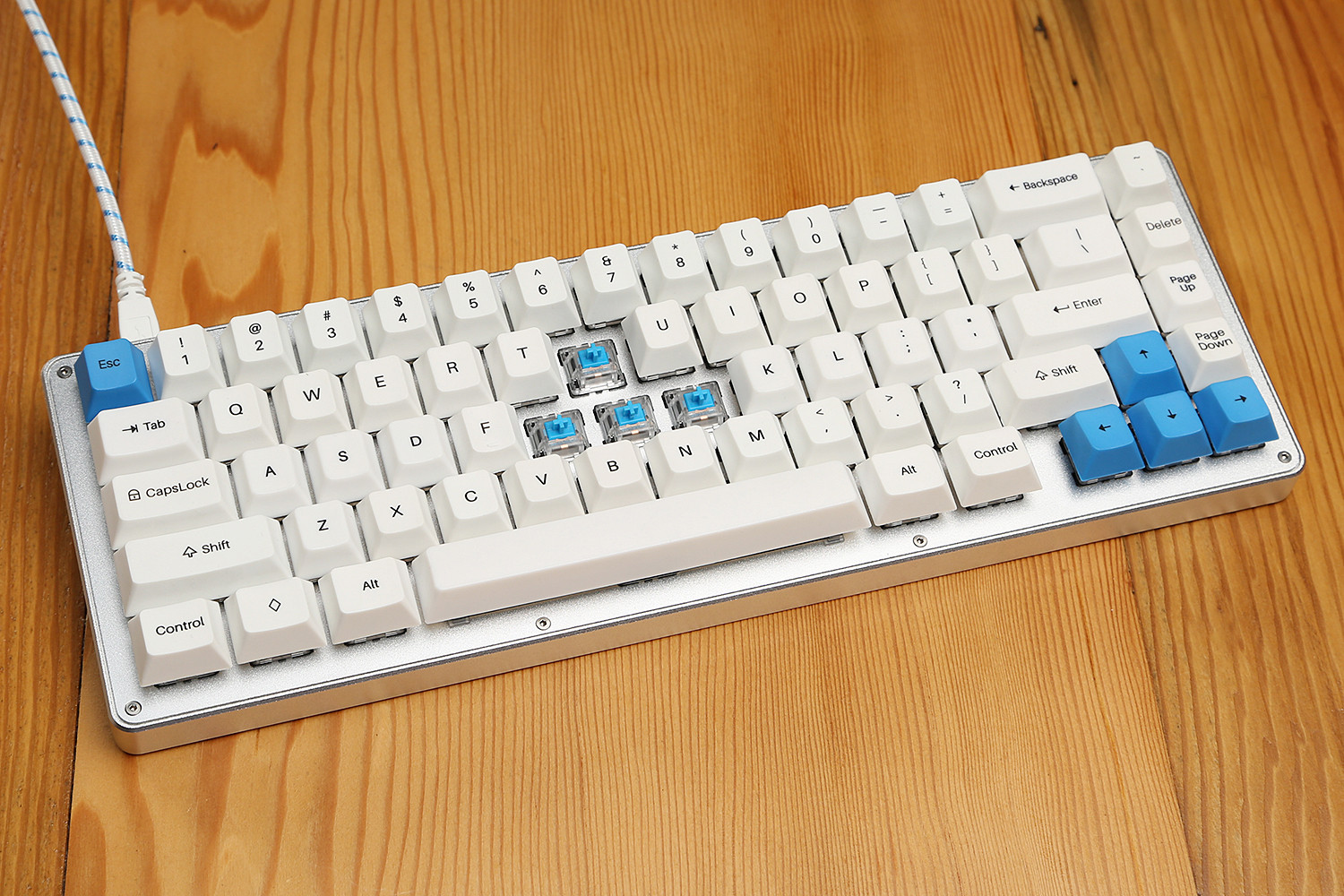
In the beginning
My first experiment was the SteelBeauty: a lovingly hand wired solid piece of steel powered by a Teensy development board.
It was a daunting project for a guy who barely could hold a soldering iron like myself. I had to design a keycap set specifically for it (DSA Retro); at the time we hadn’t that many options in terms of custom keycap sizes and the SteelBeauty featured quite some not-standard key sizes (spacebar, tab, backspace, return, shift, …).
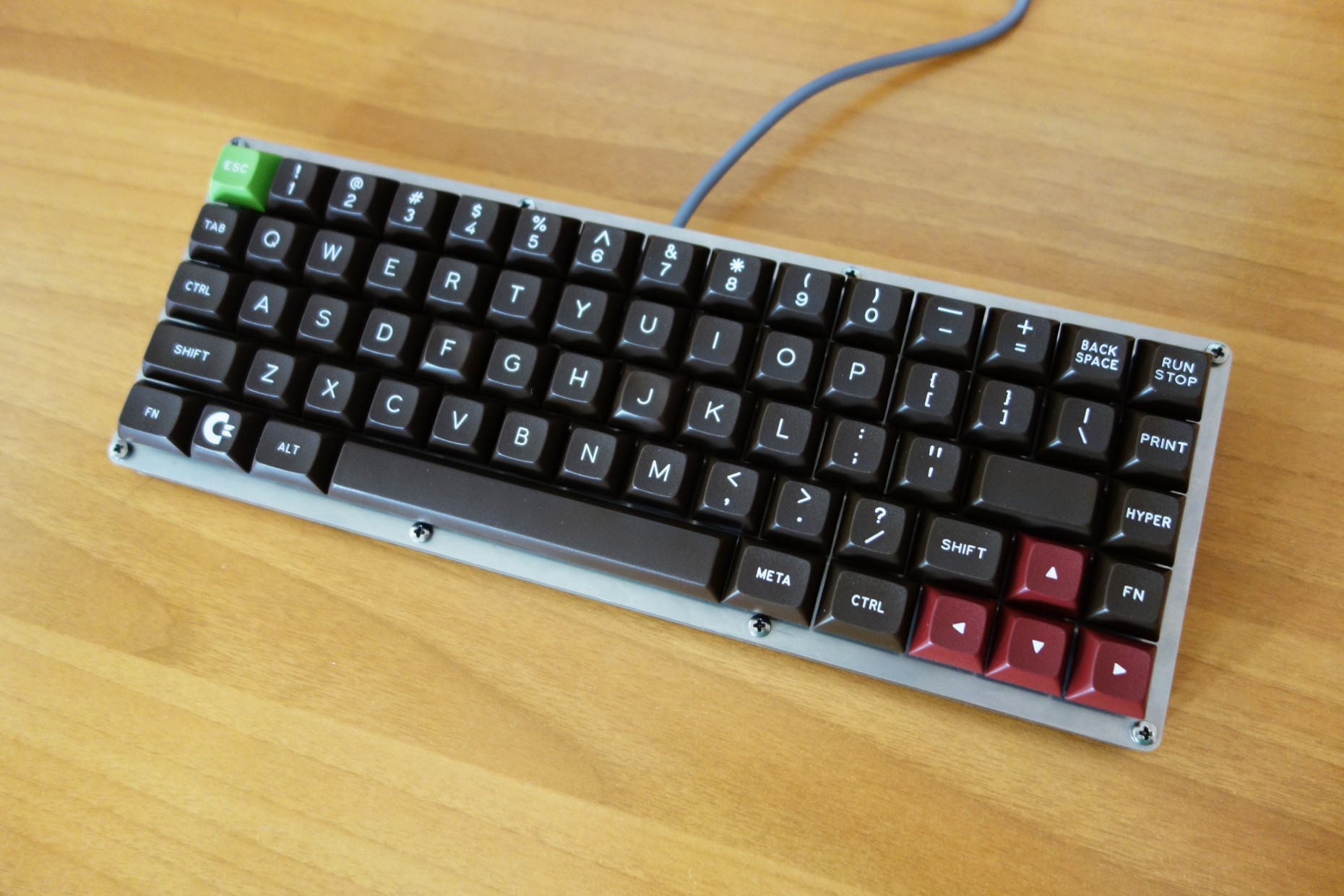
The keyboard worked pretty well and was an incredibly satisfying project to build, but it ultimately had some flaws. First of all: steel. It’s too stiff, typing long hours on it becomes tiring for your fingers. Also, the weird staggering on the number row was not ideal, even though I admittedly didn’t give it enough time because I was already working on my second custom.
In the effort of cutting cost down I tried various materials for the case and I ended up with the first custom keyboard I actually used on a daily basis: the BrownFox.
I already had DSA Retro brown keyset, so I laser cut some brown acrylic and had a USB cable braided brown as well. The keyboard name came naturally.
This time the plate was made out of aluminum and the layout more familiar and easier to find keycaps for.
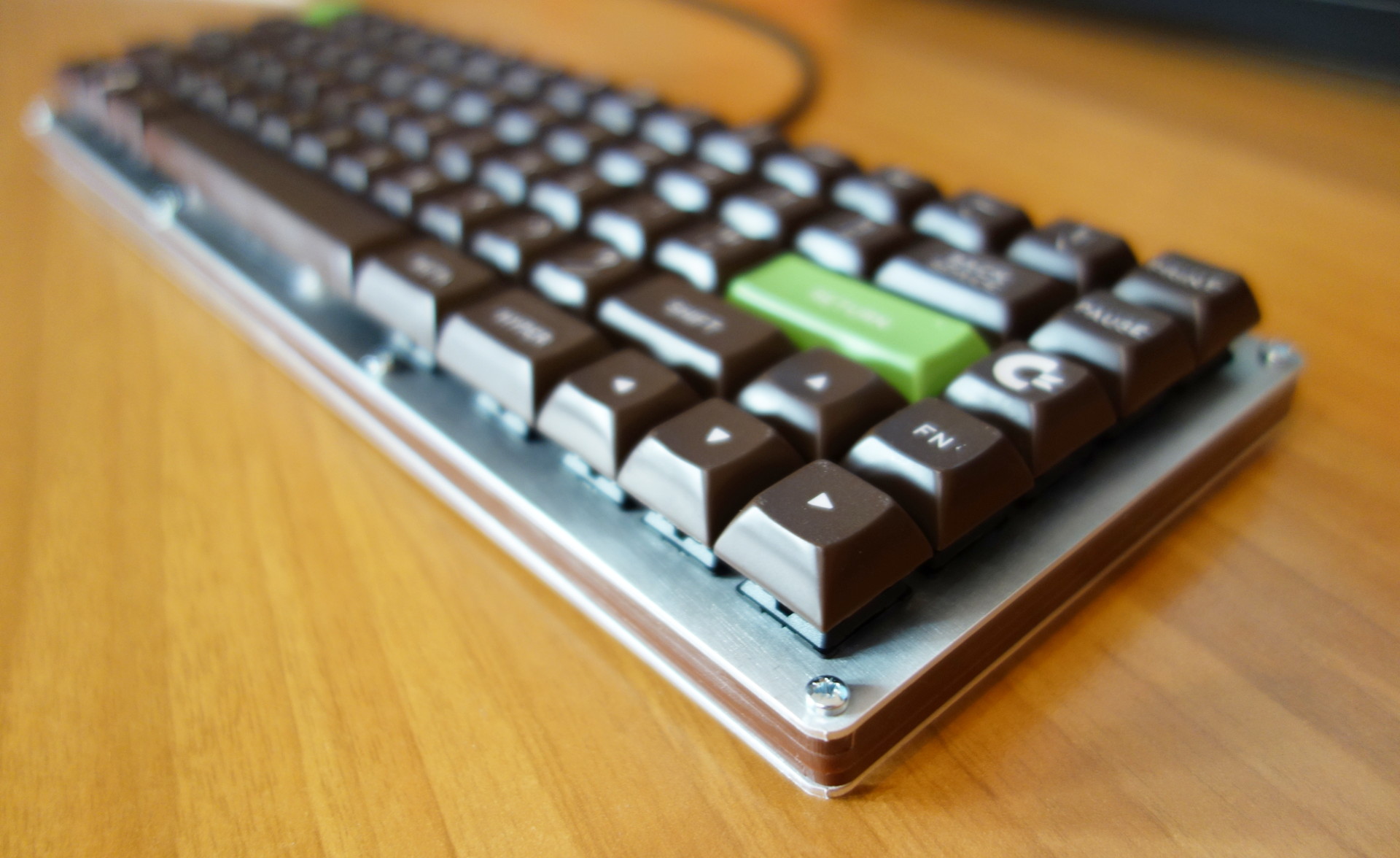
The keyboard was still hand wired, though, and I couldn’t stand that amateurish look of the “sandwich” case so I started investigating new materials.
The most polished and professionally looking custom creation I’ve done so far is the Elf Board. A keyboard made out of wood, steel (for the bottom plate) and aluminum (for the switch plate). I was able to design a sandwich case out of wood with no visible screws and in the inside I got rid of the spaghetti wiring by using a home made PCB.
To me that was pure perfection. It was also the first time I introduced the gap in the arrow cluster to better reach the left arrow and reduce mistypes. Backspace in lieu of \| feels incredibly natural, so natural that I wonder why that’s not its actual default position.
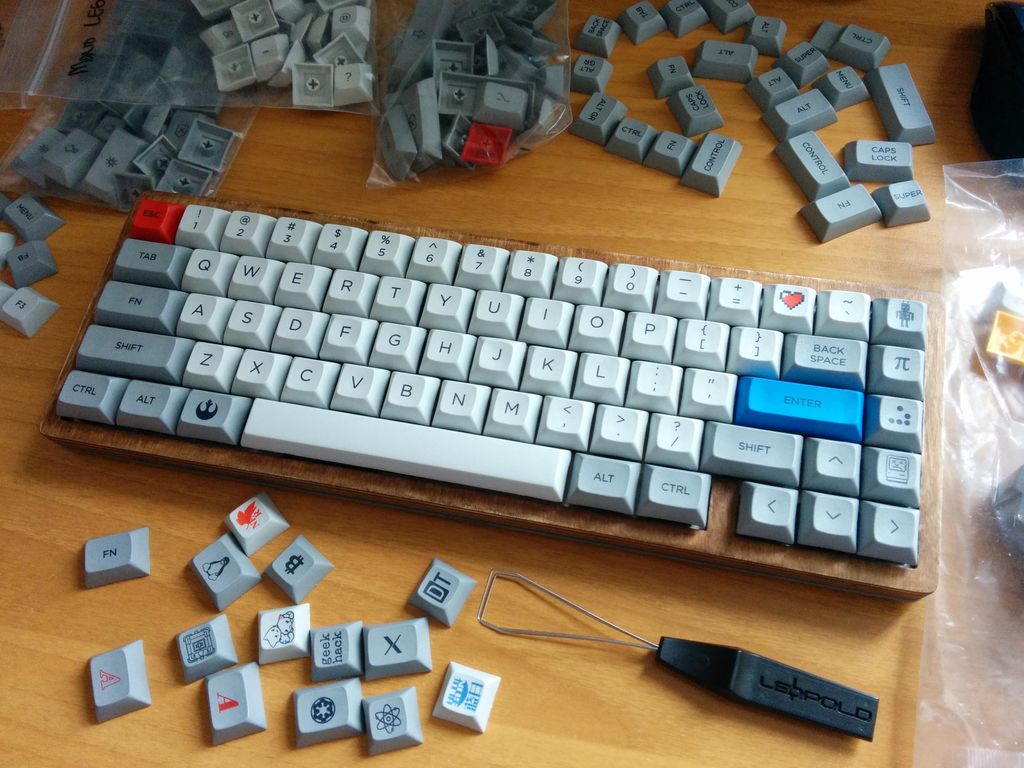
The next step to make it even better would have been to go with a factory produced PCB and CNC case.
To the rescue MassDrop and the experience of the kind guys from InputClub. They both went the extra mile to make the WhiteFox a reality and I won’t be able to thank them enough for the effort and patience in dealing with all my spoiled brat requests. Without them all this would have been just a sweet dream.
A work of passion
So the WhiteFox development started. What should have been a 3 months project became almost a one year endeavor.
Initially the case was CNC’d frosted acrylic. The WhiteFox actually got her name from that layer of translucent plastic, we later switched to aluminum but the name stuck.
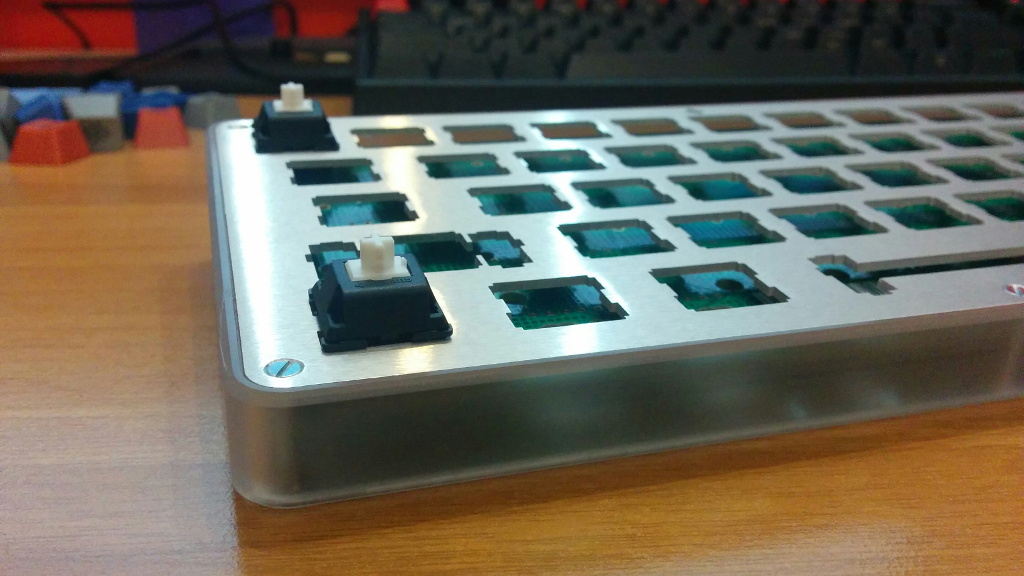
I was pretty happy with the overall look but I wanted a white PCB. We had to change manufacturer (multiple times) but ultimately we found a facility able to print white PCBs within our specifics. So finally the WhiteFox turned full white and got a fancy logo too :)
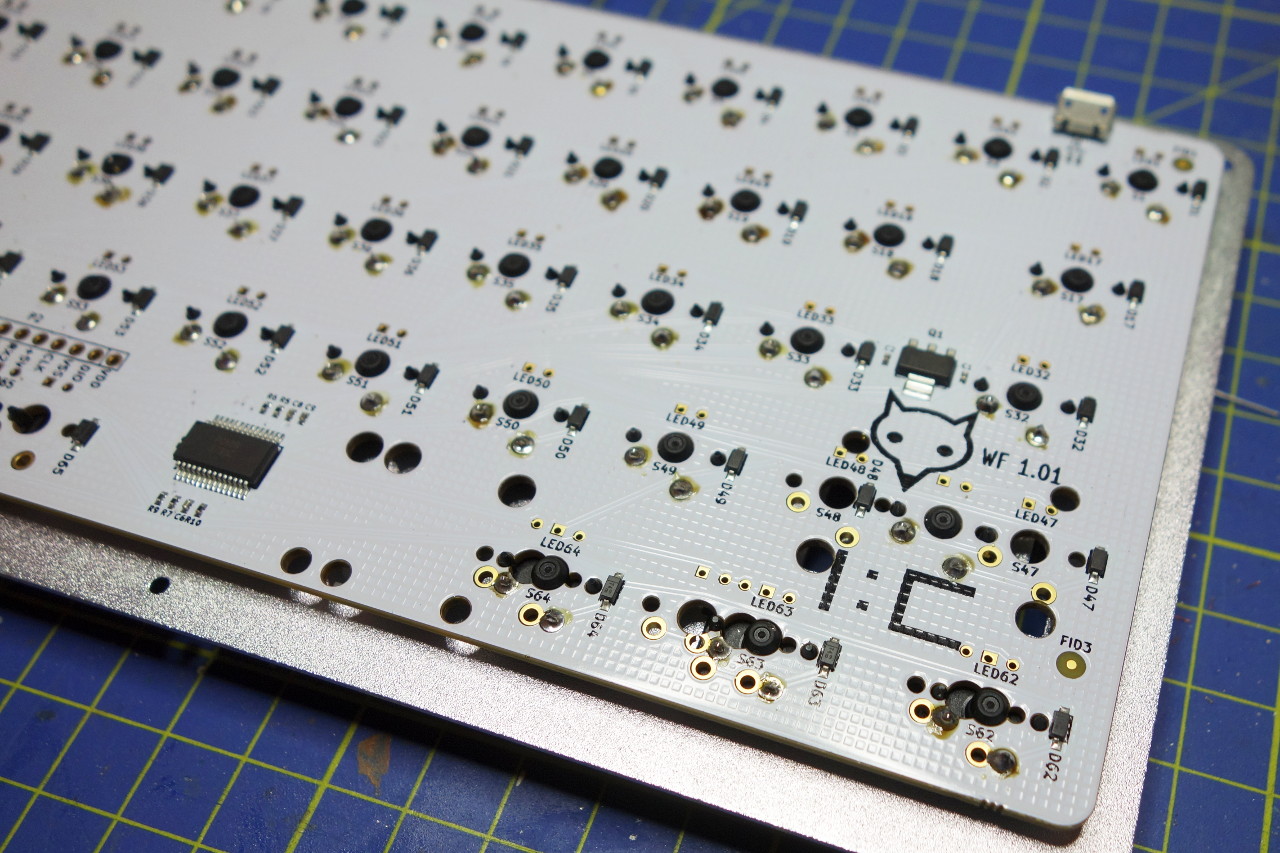
In the meantime –almost by mistake– together with other samples I got a full aluminum case and it was love at first sight! I couldn’t settle for anything less. I talked to MassDrop, we asked for a new quote and agreed that that was the right thing to do. The WhiteFox went full anodized aluminum and it took the shape that we all know and love.
The keyboard was almost ready but so many things needed to be finalized. After a couple of weeks of stress tests I realized the WhiteFox was a little too tall… 3mm too tall to be exact. We were really late in the development phase and the group buy on MassDrop already started, but I knew that that was something that needed to be addressed.
Yanbo from MD was very supportive in this situation and was able to rush the manufacturer into a new prototype. In few days I had the leveled down case and the typing experience was simply sublime. In the images below you can see the new case on the left and the old one on the right. 3mm may sound like nothing but it actually change the overall design quite a bit, especially in the USB slot area.
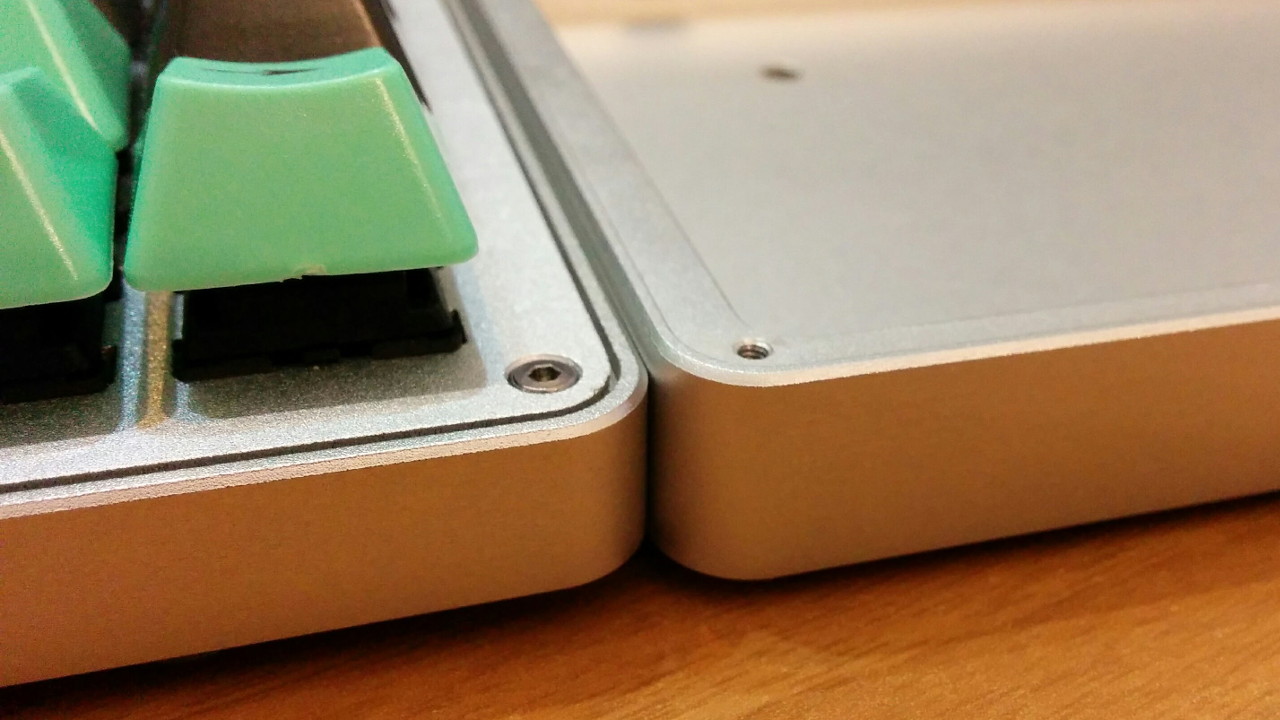
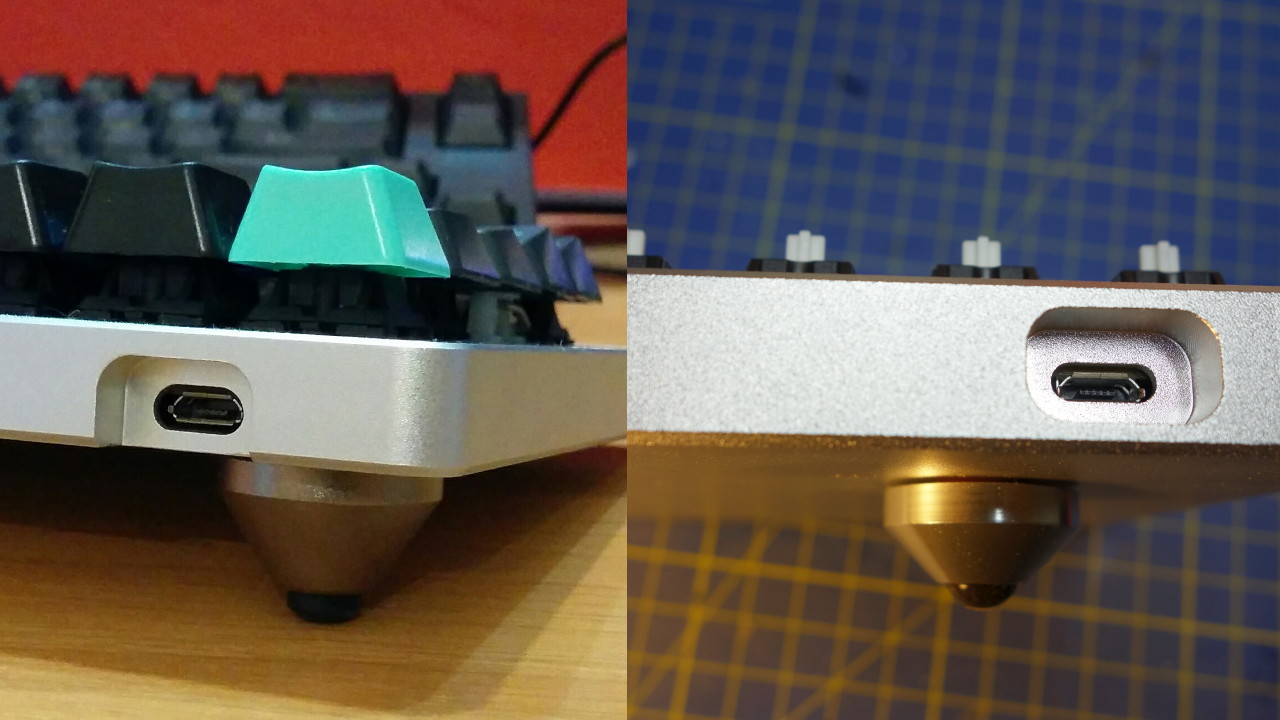
This is just one of the many details I was after in the last few months. Anodization texture, USB cable color, screw heads size and shape, back and front feet height, and of course keycaps color and design were all meticulously cherry picked.
Speaking of keycaps. A new set was designed specifically for the WhiteFox; just for the record the set is called Arctic Set, it’s pure PBT with custom made dye-sublimated legends. This is not something that you find on the market, it’s once again a product crafted just for this project. To give it a little more character we added a blue accent and I –once again– drove the manufacturer crazy trying to get the perfect shade of blue.
I believe I reviewed at least 5 blues before picking the right one, I could find only three of them in the huge WhiteFox Dev Box, we went for the middle one.
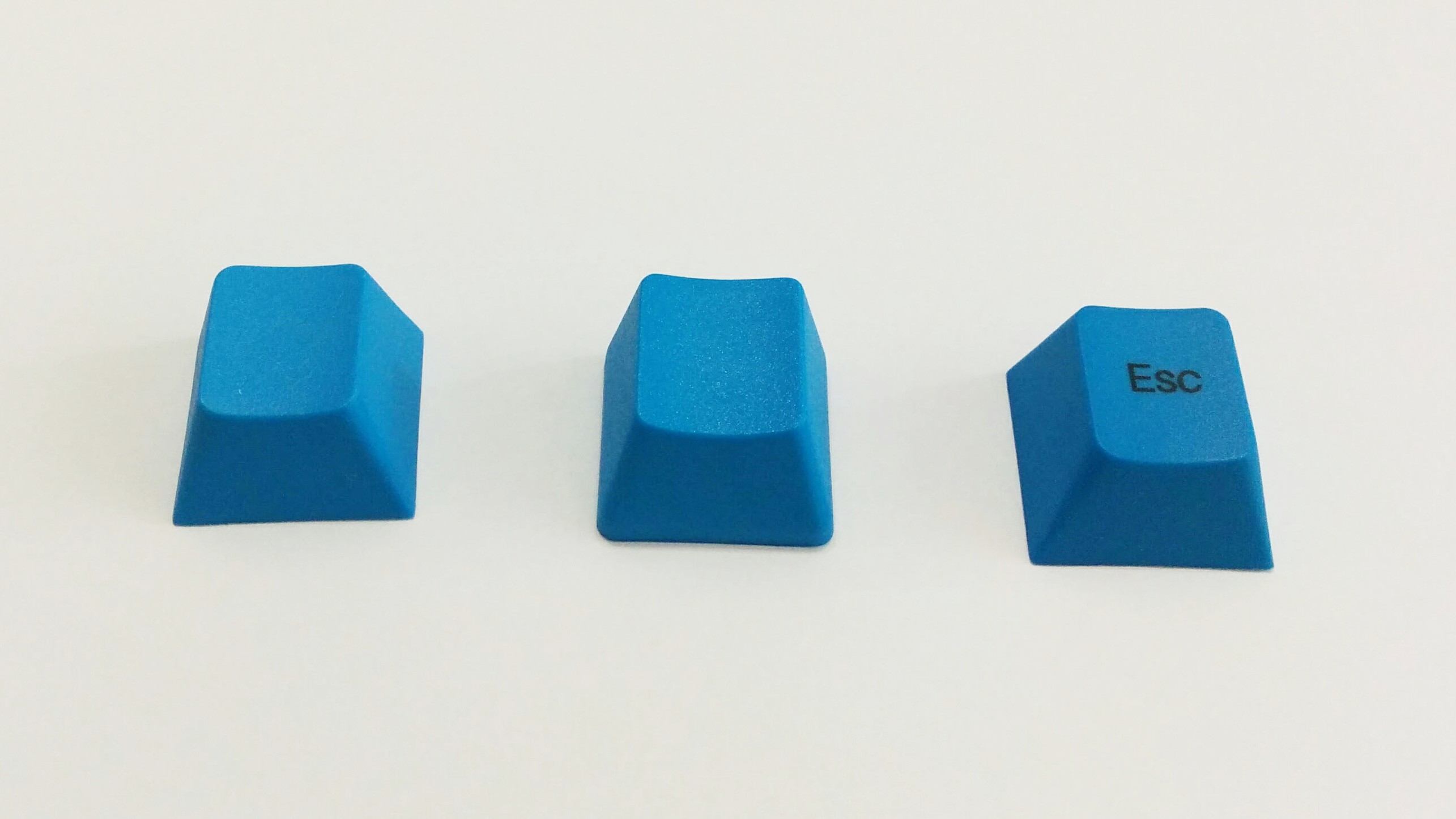
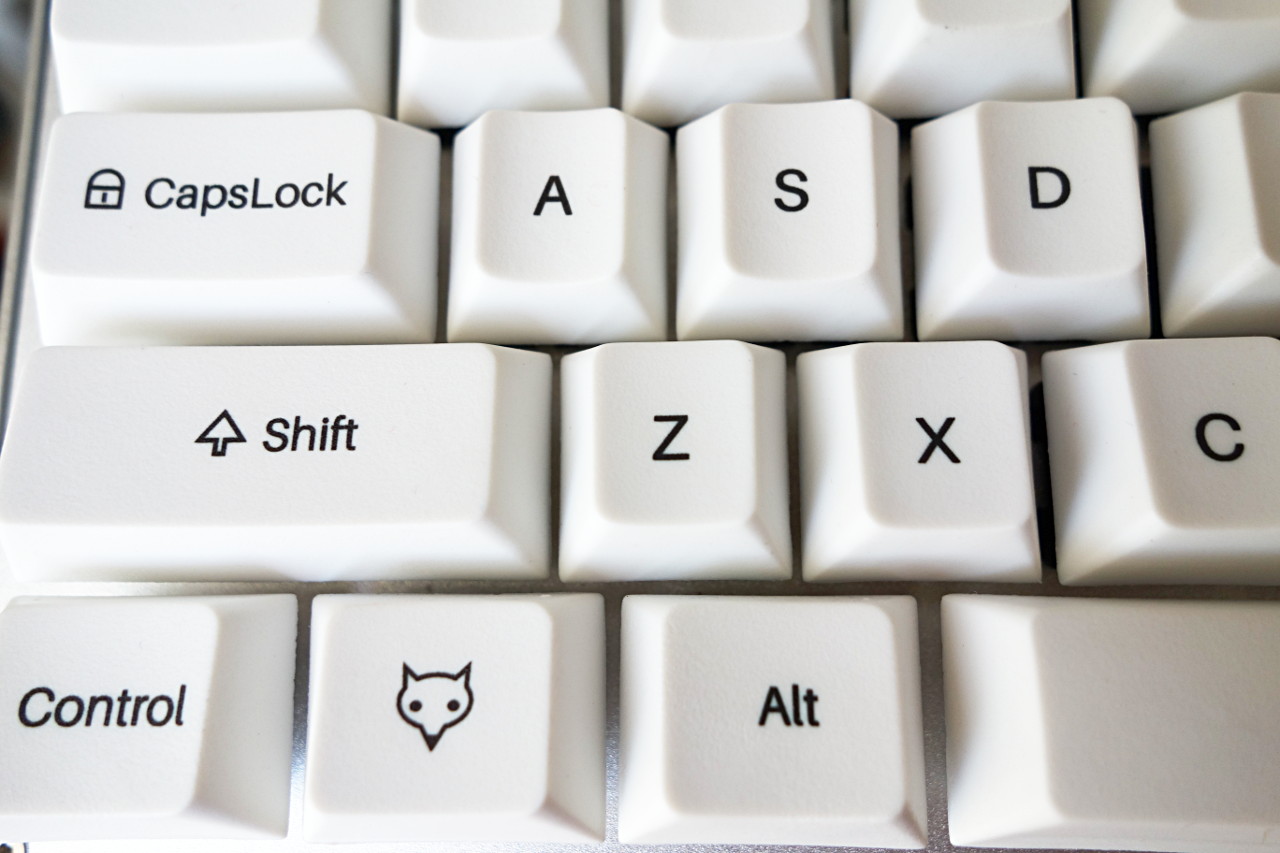
Options, lots of them!
The WhiteFox comes in six fragrances: Vanilla, ISO, Aria, Winkeyless, True Fox, Jack of all Trades. The core is the same for all but you have many options when it comes to the switch plate. I didn’t want a universal one-fit-all plate, the keyboard is an “open frame” and I don’t like to see unneeded holes spread all over the top plate.
Vanilla and ISO are the easiest to the eye. They offers a solid wall of keys with no gaps but they also have 4 out of standard keys.
Aria features a standard layout with just one hard to find key and the characteristic gap in the arrow cluster. That greatly enhance your touch typing experience. The origin of this layout name is simple, in Italian “Aria” means “Air” and there’s “some air” (a gap) between the right control and the left arrow. Simple as that.
Winkeyless is for the 7u spacebar lovers. You need to source 5 not standard keys, but if you like winkeyless you are used to that.
True Fox is the real deal. The way the keyboard was meant since the beginning and how I suggest everyone to enjoy it. There are 3 not standard keys but they are well worth the magnificent typing experience.
Finally the Jack of all Trades offers a little silly layout with the benefit of being 100% compatible with any keycap set on the market!
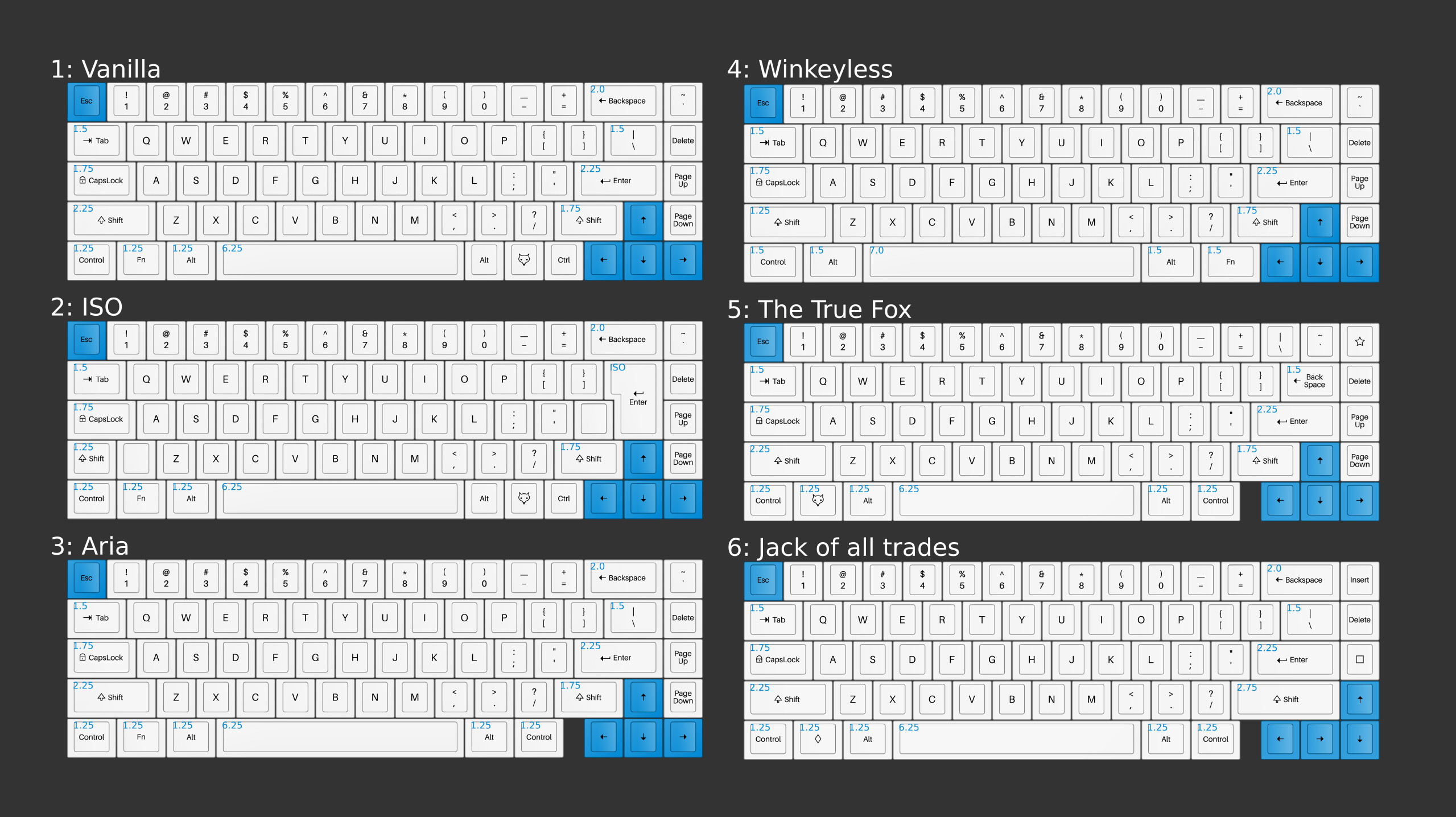
The good thing is that the PCB is one for all, so technically you could have your own layout laser cut, even one we haven’t thought about (ISO + Aria for example).
But it’s not just about the plate. The WhiteFox comes with a huge array of switch options from original Cherry MX to clones, from stiff to light, silent to clunky. I made sure that less common switches were available as well like Cherry Gray and Green together with a wide variety of the famous Zealios.
This wouldn’t be a real custom keyboard without a re-programmable firmware! I worked together with the great guys at InputClub to bring you an easy to use hassle-free online configurator. You can easily design your optimal layout and burn it straight to the keyboard, no programming skill needed. The best part is that the firmware is completely open source, if you want to get your hands dirty you can tamper with the source code and unleash all the power of Haata’s Kiibohd firmware.
So, that’s pretty much it. The WhiteFox is currently in the manufacturing lane and I hope she will reach the house of 1300 lucky owners within a couple of months. Of course I’m looking forward to your comments and photos as soon as you get her!
